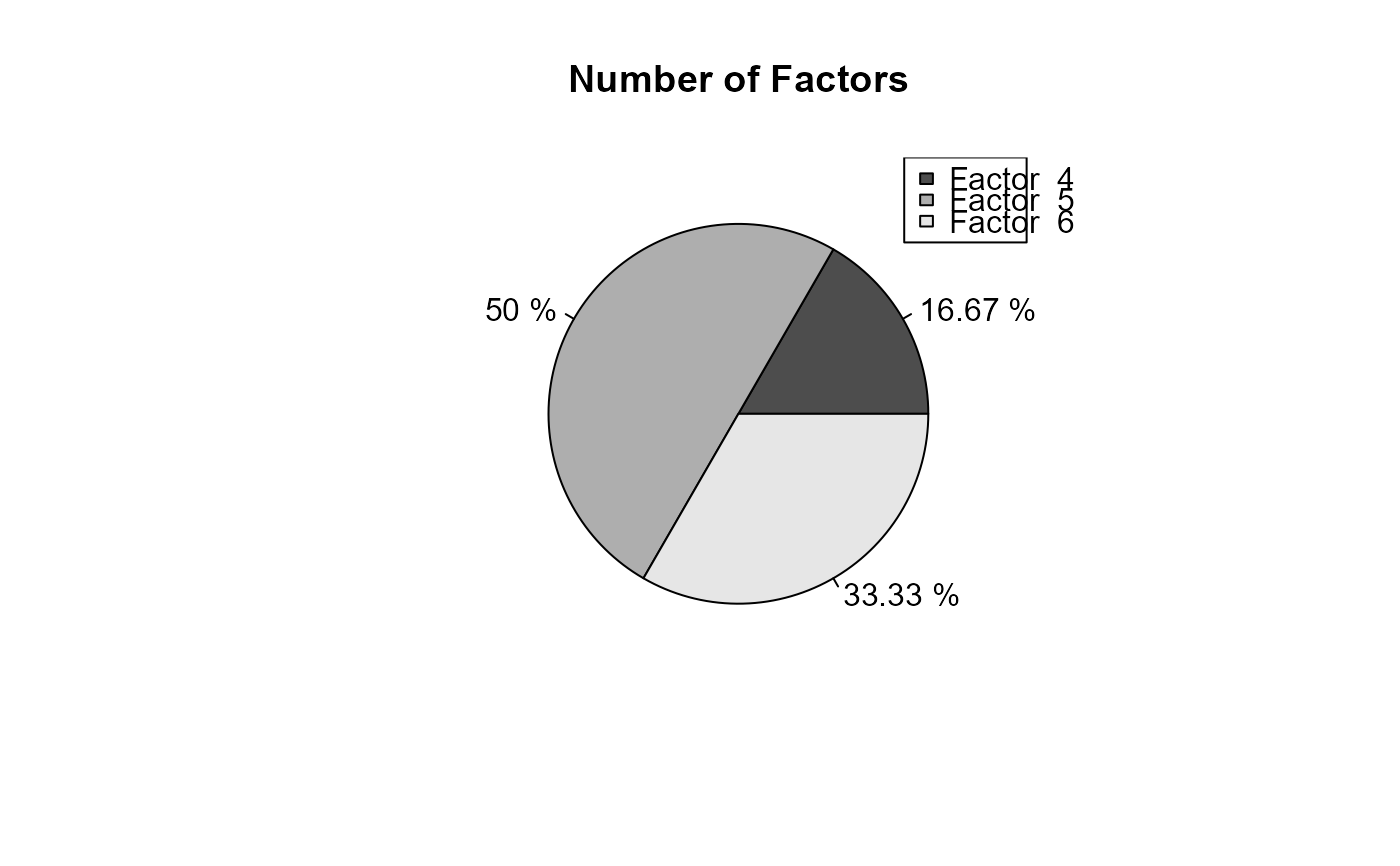Voting Method for Number of Factors in EFA
EFAvote.RdThis function implements a voting method to determine the most appropriate number of factors
in exploratory factor analysis (EFA). The function accepts a vector of votes, where each value
represents the number of factors suggested by different EFA approaches. If there is a clear
winner (a single number of factors with the most votes), that number is returned. In case of
a tie, the function returns the first value among the tied results and outputs a message. The
result is returned as an object of class vote, which can be printed and plotted.
EFAvote(votes, vis = TRUE, plot = TRUE)Arguments
Value
An object of class EFAvote, which is a list containing:
- nfact
The number of factors with the most votes. If there is a tie, the first one in the order is returned.
- votes
The original vector of votes.
